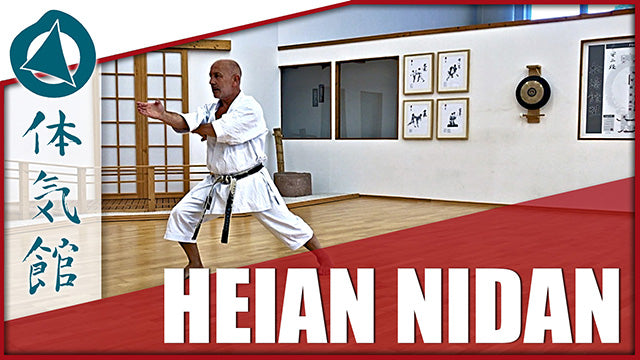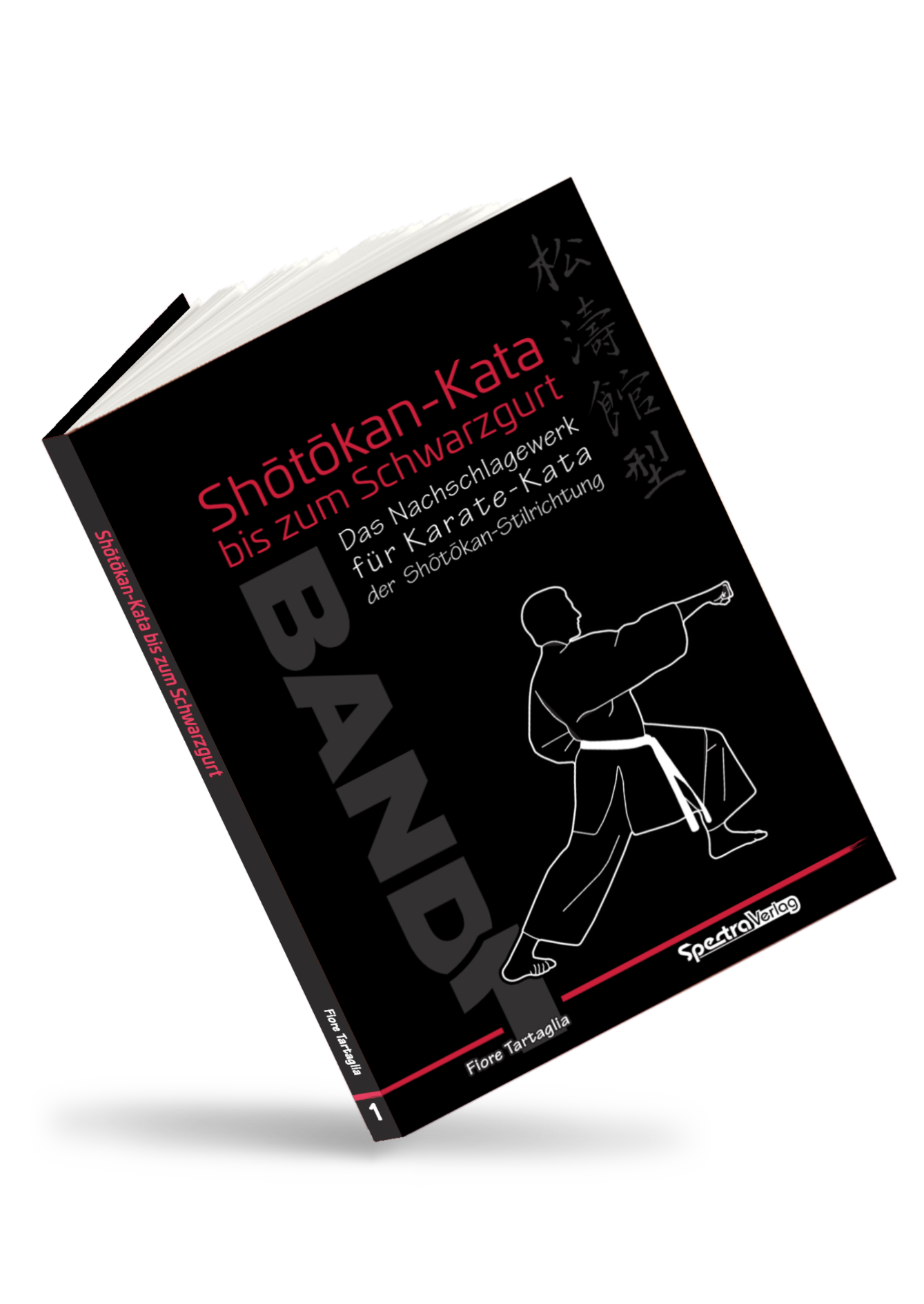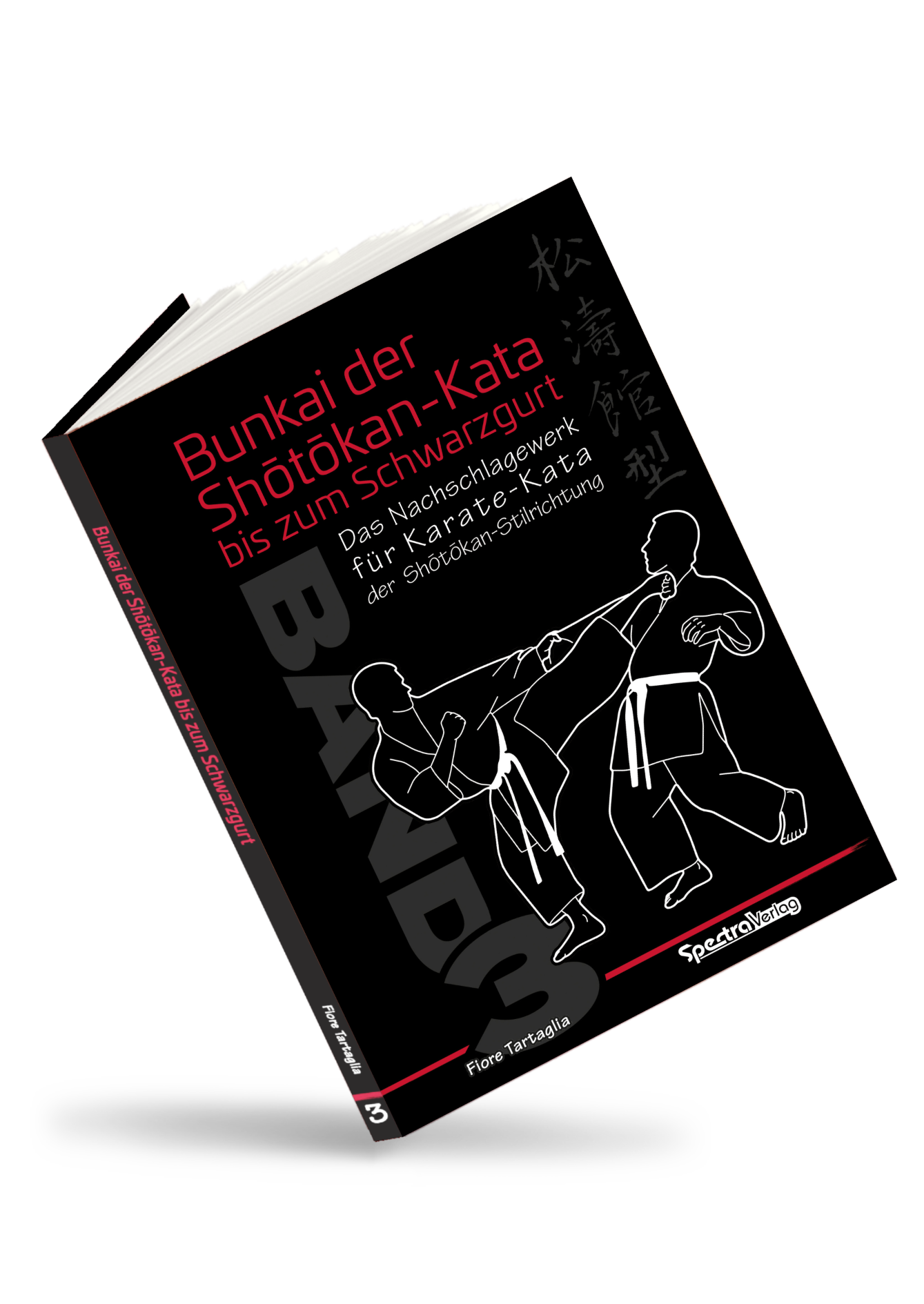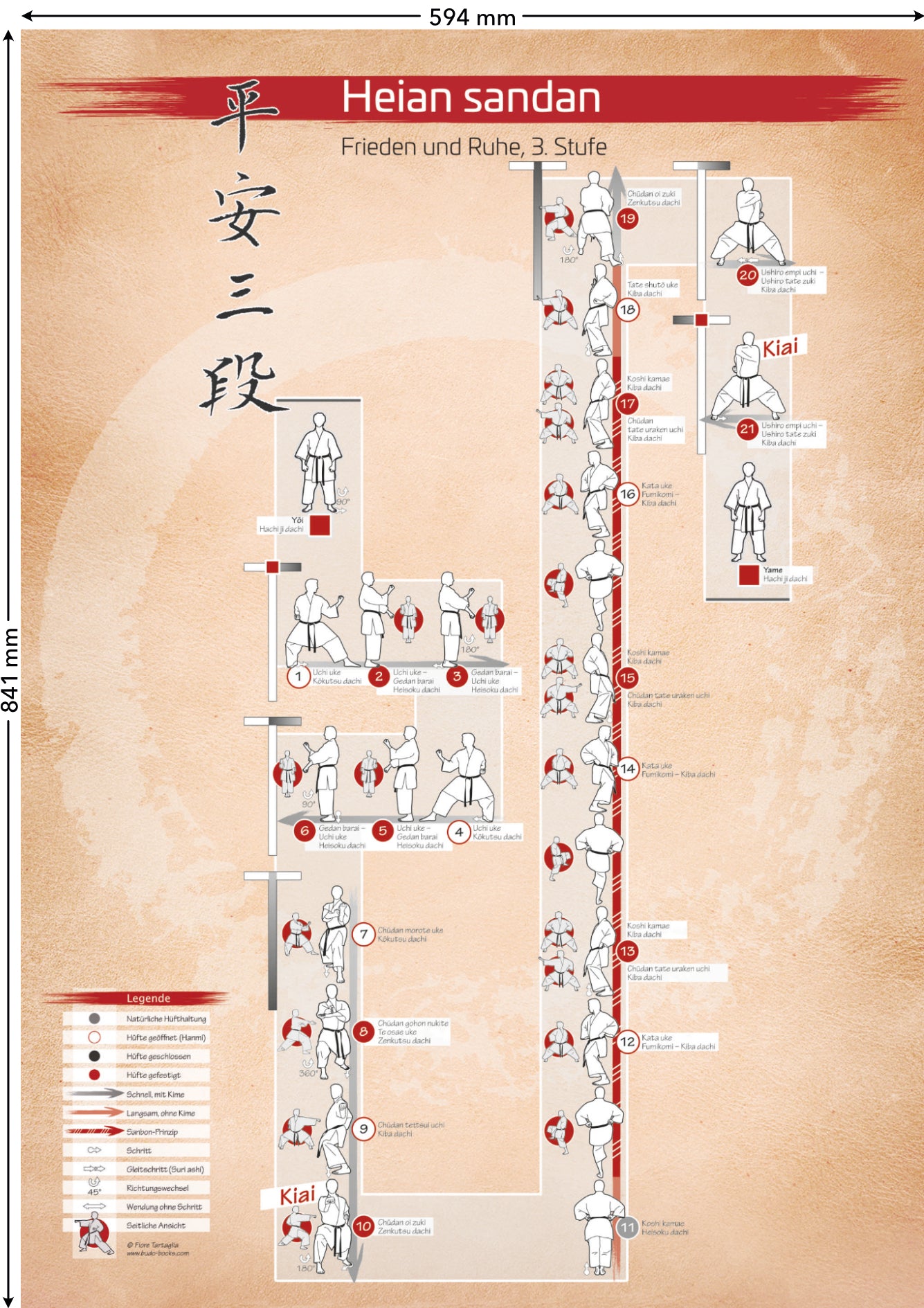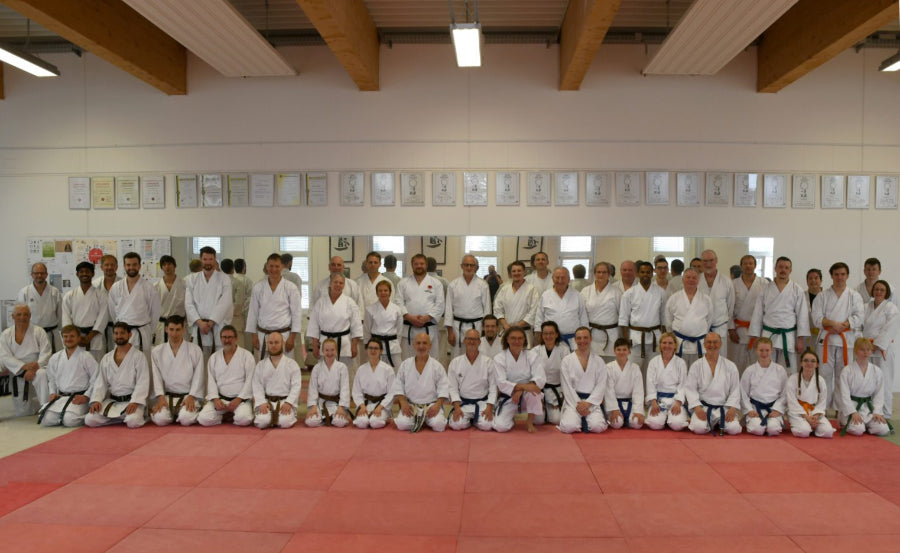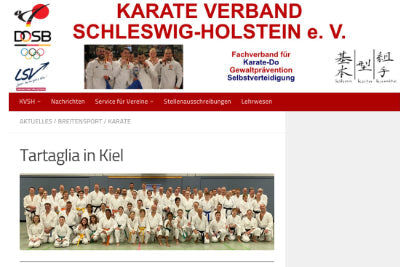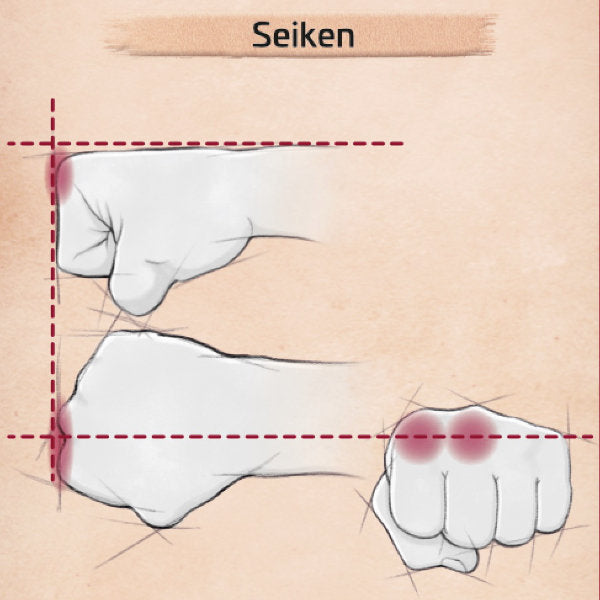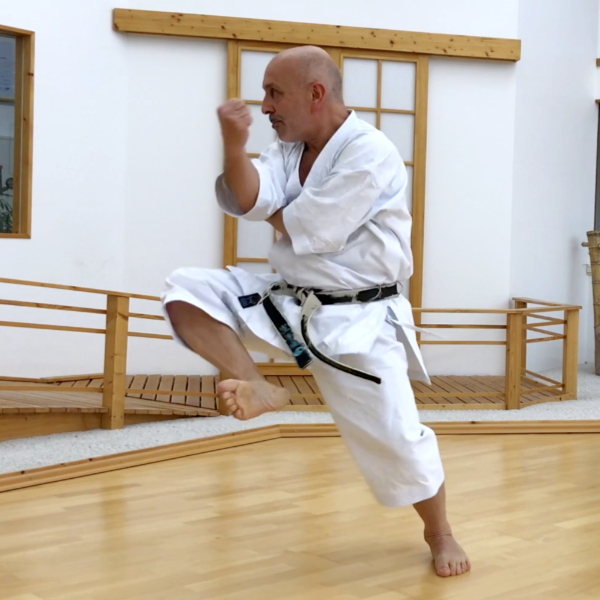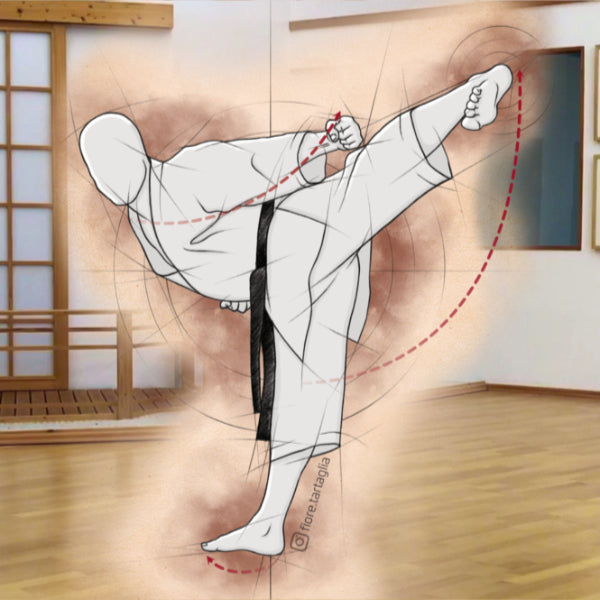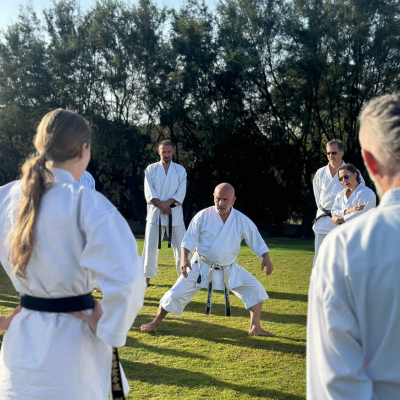HEIAN SANDAN – PEACE AND TRANQUILITY, 3RD STAGE.

The third step in learning the kata
The Enbusen of Heian sandan is very simple, but the kata demands a lot from the practitioners.
The karateka learning this kata will have already encountered double techniques in Heian nidan. However, the stakes are higher here: The double techniques become even more complex, as they are either executed from a less stable stance (in Heisoku dachi, at the beginning of the kata) or (at the end) used to counterattack an opponent positioned behind the defender. Executing these techniques while maintaining the proper stability undoubtedly requires coordination skills and considerable leg strength.
Another unusual aspect is the use of the Kiba dachi. At an advanced level, Heian sandan requires the use of hip power, whose rotations must produce powerful techniques without compromising correct form.

Double blocks
Even the two double blocks at the beginning (No. 2+3 and 5+6) are more demanding than a normal defensive technique.
In practice, these dual defense techniques are often not swung sufficiently, resulting in the combined technique not being executed cleanly. It is particularly important to ensure that the two defense techniques (uchi uke and gedan barai) are swung correctly first, and only then are the forward defenses directed toward the attacker.


Kata uke
The side stance, Kiba dachi, appears for the first time. In this stance, the shoulder defense technique "Kata uke" appears three times, which can be very useful in close combat. Kata uke should be executed not only with the arm, but also with the support of a pronounced hip rotation. Care should be taken to ensure that Kiba dachi remains unchanged.
Fumikomi
One must not forget the technique that comes before: the stomp kick (fumikomi, numbers 12 and 14). To execute this powerfully enough, the knee is deliberately and clearly raised during preparation. Alternatively, mikazuki geri is also used at these three points.
Tate uraken Uchi
By now, the karate student has already learned a lot about coordination, so he is now encouraged to practice an attack technique without countermovement: Tate uraken uchi (between numbers 12 + 13 and 13 + 14). To be effective, this technique is executed with great force. Countering with the arm that blocked (rarely used, but certainly very helpful in special defensive situations) is also an unfamiliar movement that should be practiced intensively to be executed effectively.

Sophisticated double technology
The double techniques Nos. 2 and 3 as well as Nos. 5 and 6 prove to be very instructive in their application.
As mentioned above, in practice, the swing is often not correct, allowing the movements to be executed very quickly. This clearly indicates that the student has not sufficiently studied their application. This deficiency can be remedied through extensive bunkai training.
The application of technique No. 5 (Uchi uke – Gedan barai) is deliberately shown separately here in order to offer an alternative to the previously mirrored defense.

Two important aspects
With techniques 19 and 20, Heian sandan demonstrates two important aspects of karate: first, the effectiveness of a quick change of step and stance, and second, the penetration of the opponent's guard to create a completely unexpected situation.

Defense with double technique
The last two techniques, numbers 20 and 21, represent a dangerous situation because the opponent cannot be observed.
For this reason, the defense consists of a double technique. If one technique misses, the second one will find its target.
In both zuki to the rear (numbers 20 and 21), the other arm simultaneously counters with an elbow strike (ushiro empi uchi). The opponent attacking from behind (who attempts a clinch and is therefore close to the defender) is thus countered with two techniques simultaneously. The elbow strike should therefore be executed with the required intensity.
In such situations, however, it is always advisable, after a lightning-fast first counterattack, to quickly turn out of the opponent's reach in order to escape the disadvantageous position and possibly counterattack again.
Duration: about 40 seconds
